Table of Contents
Meghna River
Today I came to Chandpur, the most interesting place of the river where the third largest river of the world has merged. Chandpur is also called the land of hilsa fish. The name of that river is Meghna. I have repeatedly fallen in love with this river.
Today I will tell you about that river. Where there will be the history of the river, the confluence of the currents, the cloudy skies, the new islands and the land adjacent to the river, and the people thirsty to travel.
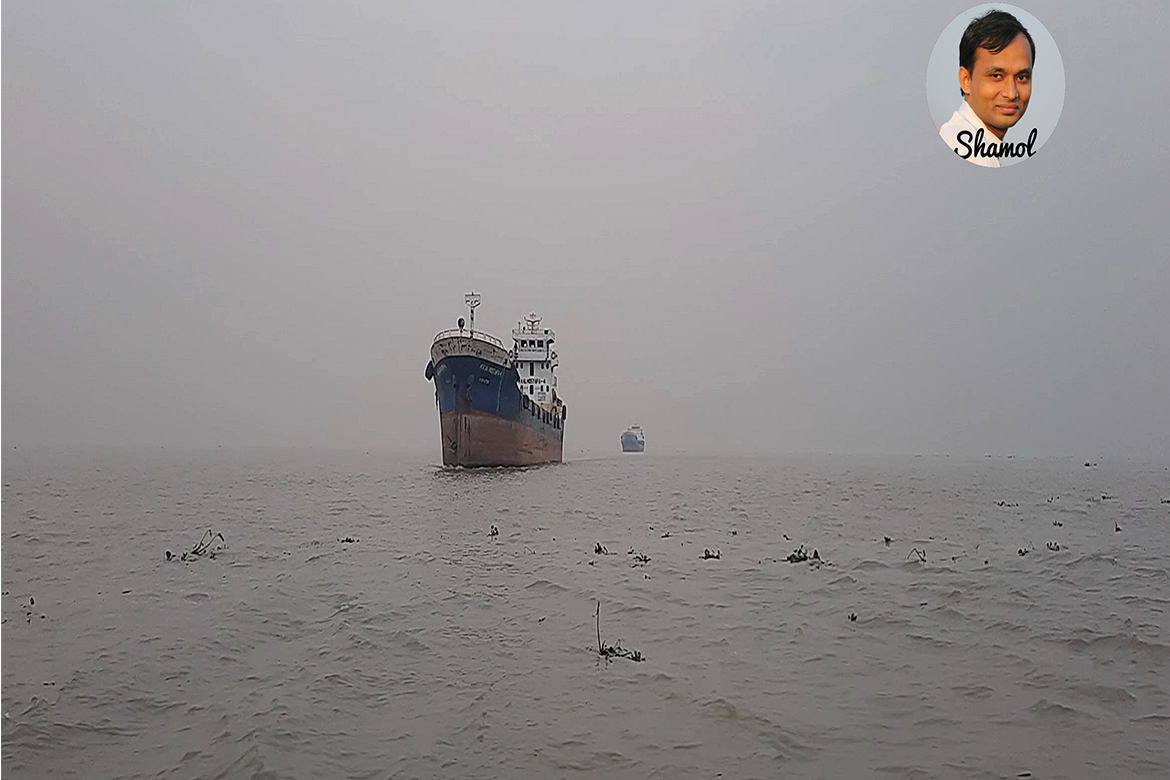
The Meghna carries much more rainwater than the major rivers of the world. Cherrapunji in the Indian state of Meghalaya receives the highest rainfall in the world. Large bells or haors have been created in Sylhet for the huge amount of rainwater. And because of this Meghna is very deep and fast flowing. Meghna is famous for landslides. When the rainwater cannot reach the estuary very fast, it floods the banks. A lot of hilsa is found at the confluence of Padma and Meghna near Chandpur. This hilsa is very tasty. Hilsa of Chandpur is world-famous for this. Location of the long Meghna-Gomti Bridge over the river Meghna at Daudkandi in Comilla. The Bhairab Railway Bridge is also an important bridge over the river. Chandpur is a famous city and port on the banks of the Meghna. The words of that Chandpur will come up in this documentary.
I am Shamol Nath writer and Film creator with you today.
Full Video Documentary at Meghna River Chandpur. Directed By: Shamol Nath
Me and the tourists coming to Chandpur:
Clouds were gathering in the sky at that time. Cold breeze. So even though it was 11:30 in the afternoon, the sun was not shining. Rows of trees along the river bank cast a shadow over the place. Seating next to it. Sitting there and looking at the river, my mind became excited. Boats have been tied up on the bank to go around the river.
People gather there in the morning and afternoon to enjoy such a beautiful view. From morning to afternoon the crowd is more. it is also known as the estuary, at the confluence of the Padma-Meghna-Dakatiya rivers in Chandpur city. The district administration has declared the place as a tourist area named ‘Hilsar Bari Chandpur’.
Hundreds of people visit it every day from dawn to dusk. The number of local people is more. Apart from Chandpur, many tourists from surrounding districts also come there. However, during the two Eid, Puja, Pohela Boishakh, and other public holidays, thousands of tourists gather. Coming here, my mind is full. As if all fatigue is gone. The mind is filled with peace.
The specialty of this place is that here it is a scene of the madness of Padma Meghna, sunset, fishing, various kinds of navigation. Next to this big station, there is a huge warehouse of various kinds of fresh fish including the Padma, Meghna’s silver hilsa. Most of the people who come to visit take fresh fish from Chandpur on their way. Steamer ghat on one side of the big station, launch ghat on the other side, railway station in the middle.
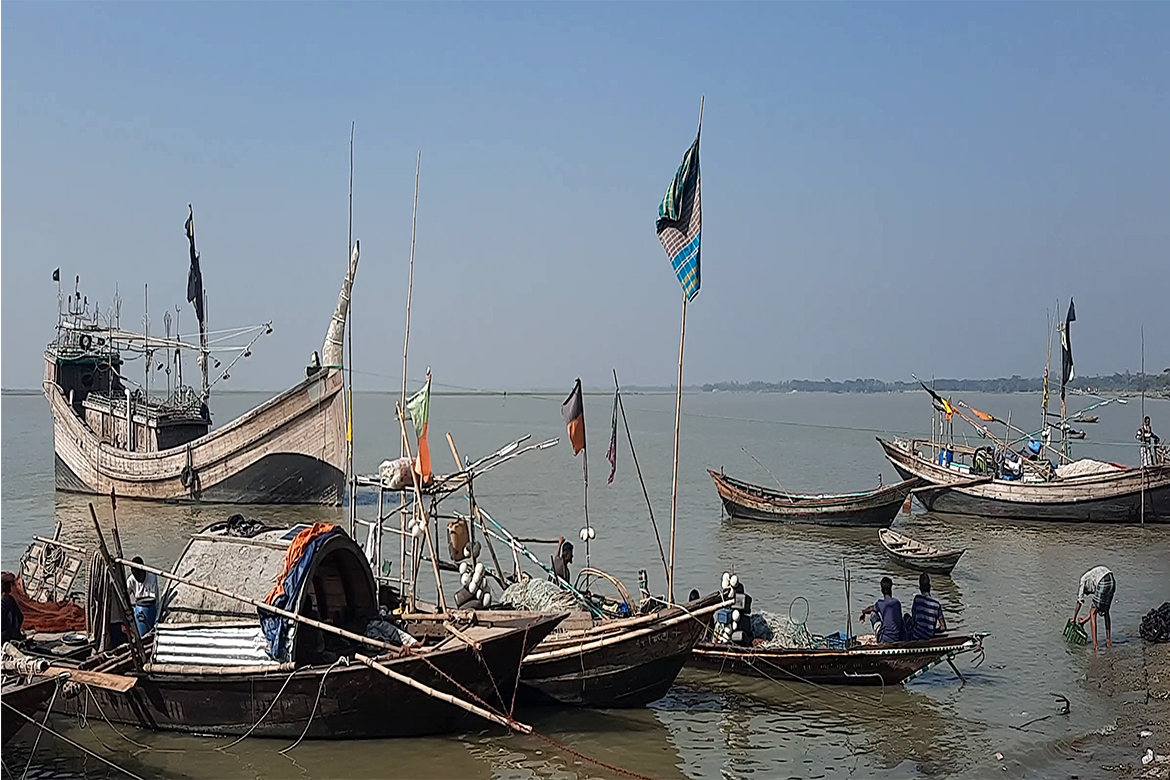
The terrible estuary of three rivers in this Chandpur:
The three rivers Padma, Meghna and Dakatiya meet here. As the rivers flow in three directions, a huge whirlpool of water has formed there. Hundreds of people, cargo, or trawlers with launches have gone missing in this triangle. This confluence of three rivers is like a mysterious death well.
If something is submerged in that terrible vortex, its hadith will not match. The large passenger launches that sank here have never been found. This confluence of the three rivers of Chandpur is also known locally as the mouth of the Estuary of three rivers. The estuary is located on the very bank of the river. Usually, river banks are shallow. Surprising but true, this estuary is very deep despite being on the banks of the river. During the rainy season, it is transformed into a mysterious death pit. Seeing the terrible whirlpool of water makes people tremble. There are many folk tales about this estuary.
Launches of various southern routes including Barisal, Patuakhali run along this estuary. This confluence of three rivers is one of the tourist spots of Chandpur district headquarters. Every day thousands of people from different parts of the country gather here.
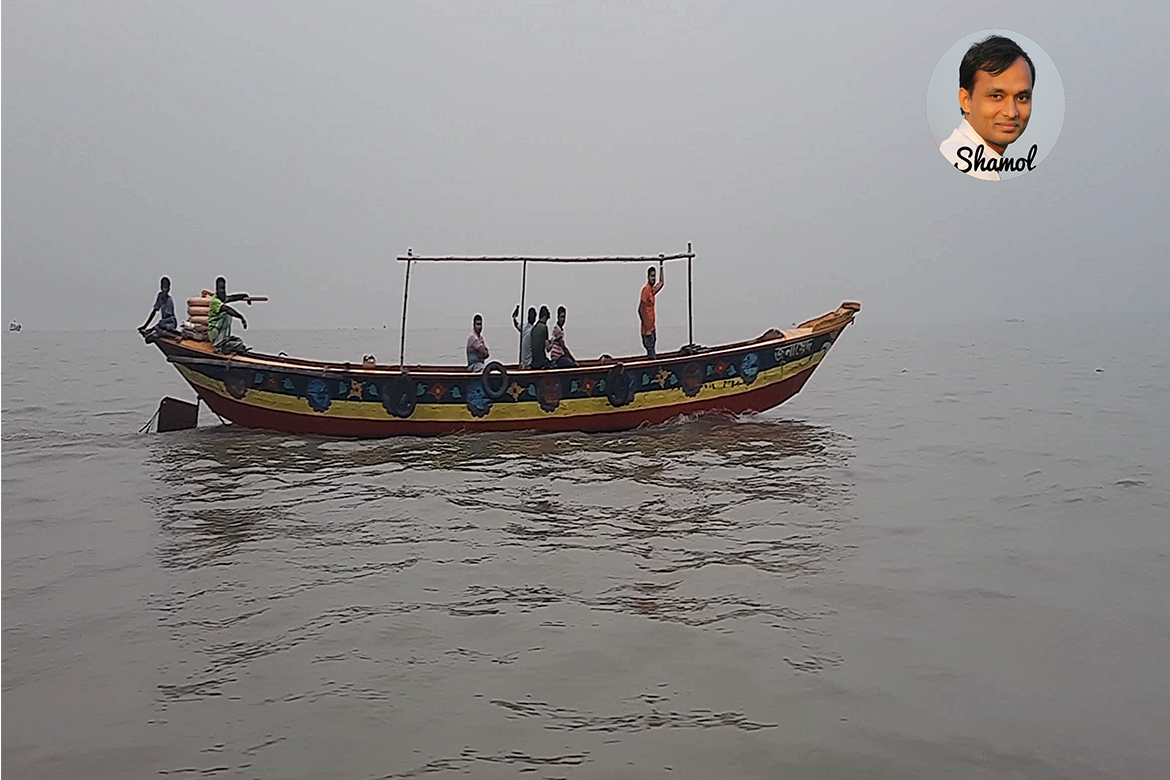 The boat is Passing at Meghna River. Picture: Shamol Nath
The boat is Passing at Meghna River. Picture: Shamol Nath
Crossing the Meghna River at risk:
Every day thousands of people from Chandpur town west of Meghna River cross the Padma-Meghna river at the risk of their lives. There is always panic among the passengers as the sailors and drivers of these areas do not follow any rules. Trawlers do not have adequate life jackets and buoys so there is always a risk of accidents. Chandpur town at the mouth of Padma, Meghna, and Dakatiya rivers. The river Dakatiya has divided the city into two parts. The northern part is known as New Market and the southern part is Old Market. Meghna also carries the waters of Ganges and Brahmaputra, two other major rivers of the country. Meghna is a very deep and navigable river. Navigation on the river is possible throughout the year. Small boats and steamers ply the river almost all year round. During the monsoon season, tidal effects are observed in the Meghna up to Vaidyerbazar in the Narayanganj district. During the dry season, this tidal line extends to Markuli in the Brahmanbaria district.
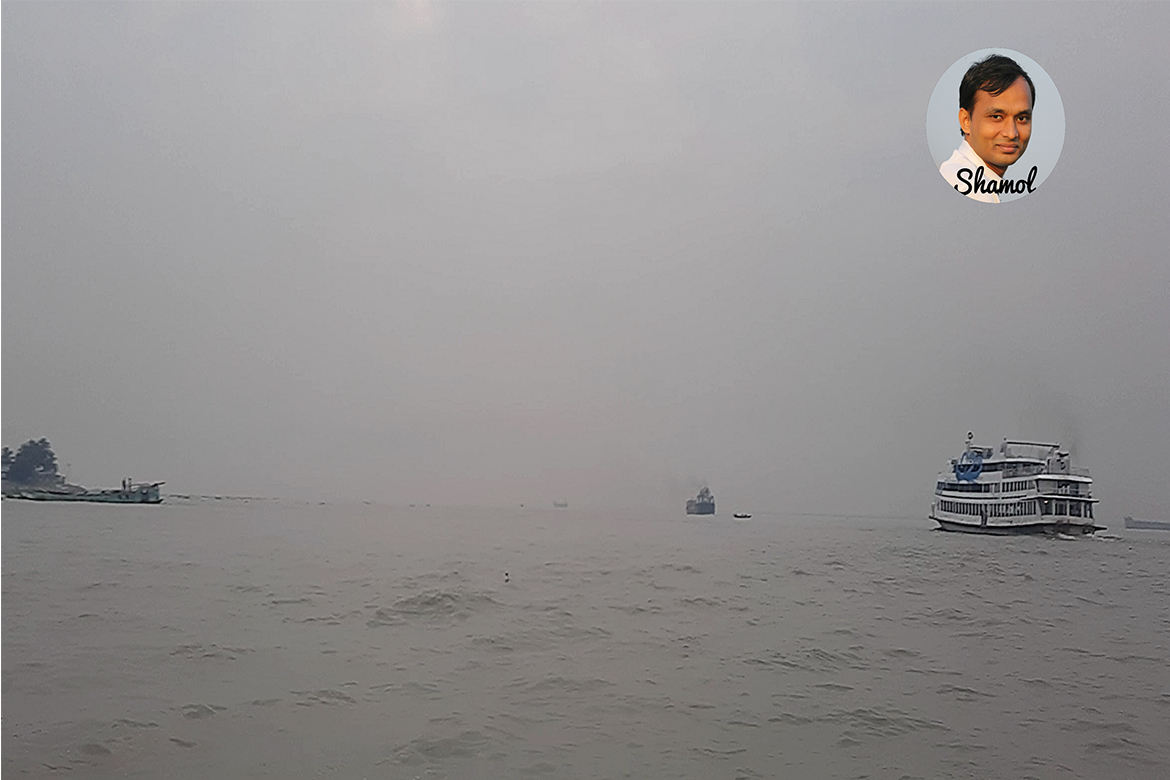
Meghan’s new char at Chandpur:
Today my purpose is to go to a new pasture which is also known as New Island. Everyone came to see it.
Leaf bench on the shelf, a colorful umbrella above. The vast expanse of water in front. But this is not a beach. It is a char at the confluence of the Padma, Meghna, and Dakatiya rivers in Chandpur. Crowds of traveling people are growing here now. Thousands of people are coming to visit this char with their families every day.
The char arose last year between the Padma and Meghna, about 1.5 km west of Chandpur district town. It is surrounded by the waters of Padma and Meghna. The char is the char of the estuary to some, to some Chandpur beach, again known to some as ‘Mini’ Cox’s Bazar. Someone is coming here in the morning or in the afternoon to see the sunset. Someone is coming again for an hour or two.
One after another women, men, and children of different ages are coming to Char with engine-driven trawlers and boats. Someone is running down the river, someone is hanging out on the shelf and playing sports. I was surprised to see it. This is like the second Cox’s Bazar. There is no saltwater in the sea and no sound of big waves.
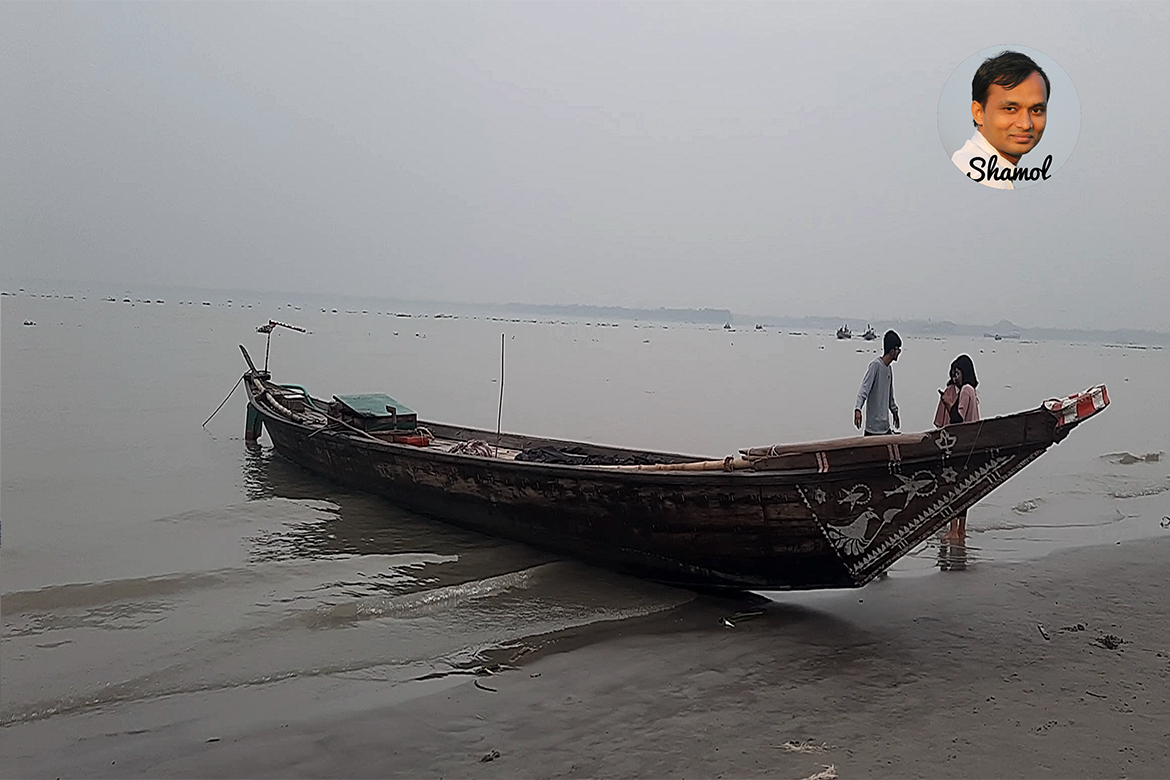
Hilsa House Chandpur:
The word Chandpur inevitably comes with the word hilsa. The national fish Hilsa grows in the rivers of this district. He who eats Hilsa from Chandpur once, cannot forget its taste. So the branding of the district has been around this hilsa. Chandpur has now become the home of Hilsa.
Around 100 years ago, a huge market for Hilsa was built on the banks of the Dakatiya river in Chandpur. Which is now known as Chandpur Mach-Fish-hat. This ghat is crowded with buyers during the Hilsa season, as well as nearby. As the buyers of the country life, so do the buyers outside the country. Whatever the price, Hilsa lovers do not hesitate to take the fish of their choice. All the joy of returning home with hilsa by bargaining around the market!
Fisheries Research Institute has been set up in Chandpur for research on Hilsa. Research on Hilsa started here in the mid-eighties. At present 14 scientists are conducting two types of research on Hilsa. The first type of research is related to the storage of hilsa. The second type is related to the reproduction of Hilsa. Researchers here claim that due to this research, the production of Hilsa has been increasing since 2004. Due to the success of their 33 years of research, the production of Hilsa in the country has increased almost three times.
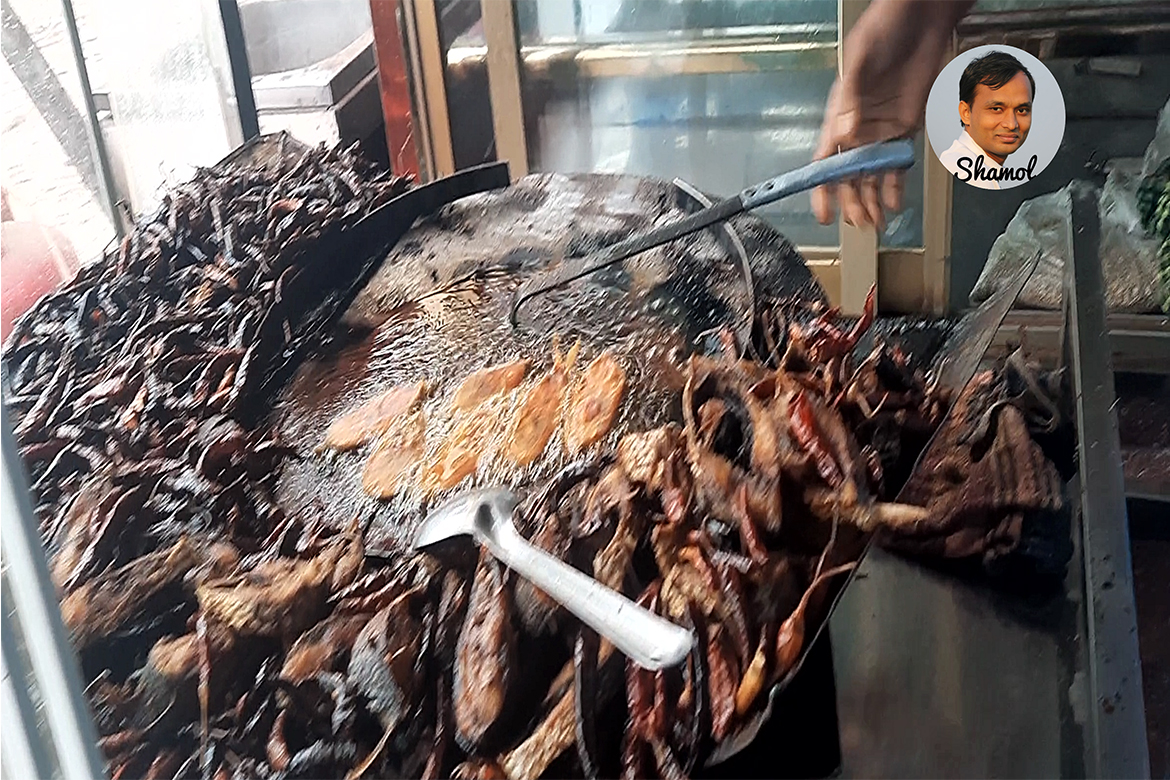
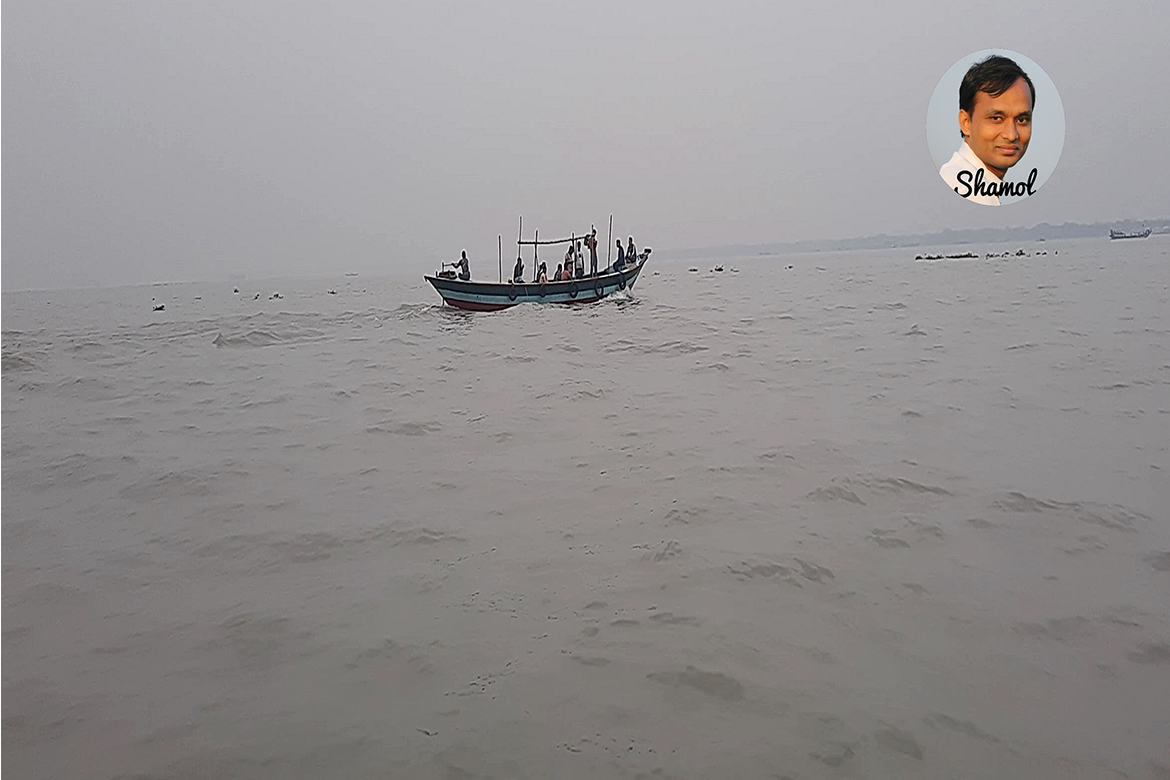
Where is Meghna after Chandpur? : After Chandpur, it flows into the Bay of Bengal in a straight line with the confluence of the Padma and the Jamuna. From Chandpur to the Bay of Bengal, the Meghna is divided into several small rivers, but the main flow reaches the mouth of the Meghna. Near Bhola, before joining the Bay of Bengal, the river divides the Ganges delta into two main streams, separating the island from the mainland on either side of the main island. The western stream is called Ilsha and the eastern one is Bamni.Length of Meghna River: The border of Bangladesh has been divided into two parts and entered Bangladesh under the name of Surma and Kushiyara. Surma and Kushiyara rejoined near Markuli and merged with the Padma River at Chandpur via Bhairab called Meghna. The combined length of Barak-Meghna is 950 km, of which about 340 km is located in Bangladesh. In addition, the total drainage area of this river system is about 36,000 sq km in Bangladesh. The Gomti and Khowai rivers, which originate from the Tripura Hills, are the main tributaries of the Meghna. The main rivers of this basin are Barak, Surma, Kushiyara, Baulai, Titas, etc. Meghna increases the fertility of Bangladesh in flood and silt soils during monsoon.
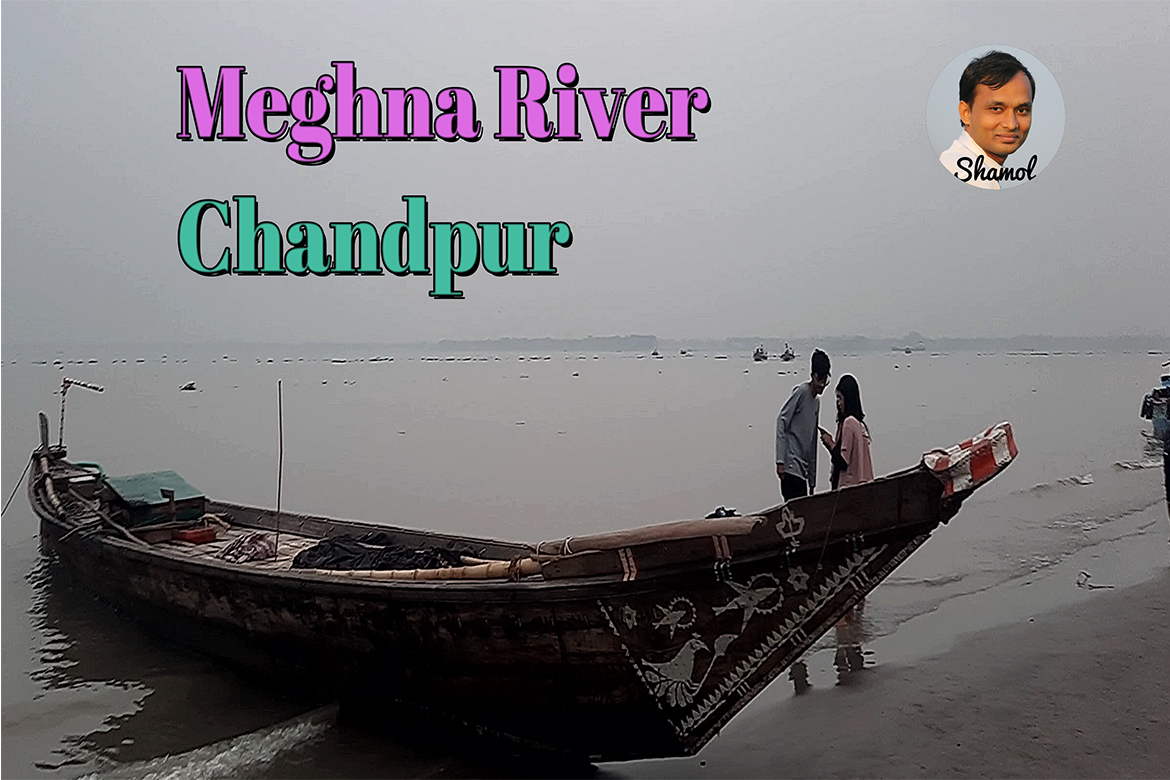
How to Go to Chandpur Meghna Ghat:
From the Saidabad bus terminal in the capital Dhaka, several buses leave for Chandpur almost every hour. Notable among these are Padma Express and Bilash Express. … The easiest and best way to get to Chandpur is by the river. The launch leaves from Sadarghat every day from 8:30 am to 12 midnight.
You can visit various social sites of Shamol Nath. Lika as: YouTube, Facebook page, Facebook profile, Twitter, Instagram, LinkedIn, and website. He always reviewed Literature, Film, Travel, and Historical articles.
For more information. see more…
Links of Newspaper: see more…
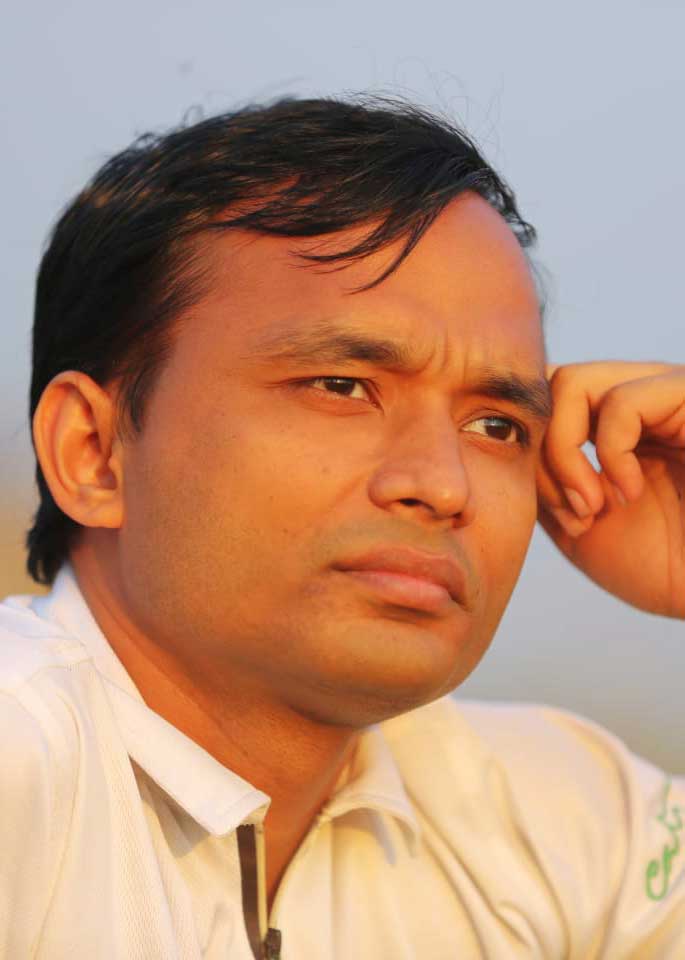
Shamol Nath is a writter & Documentary film Director. Shamol Nath Write and made documetaries over the decade.
He mainly focus on literature and films. Write poems, story, eassy and recently write a novel etc.
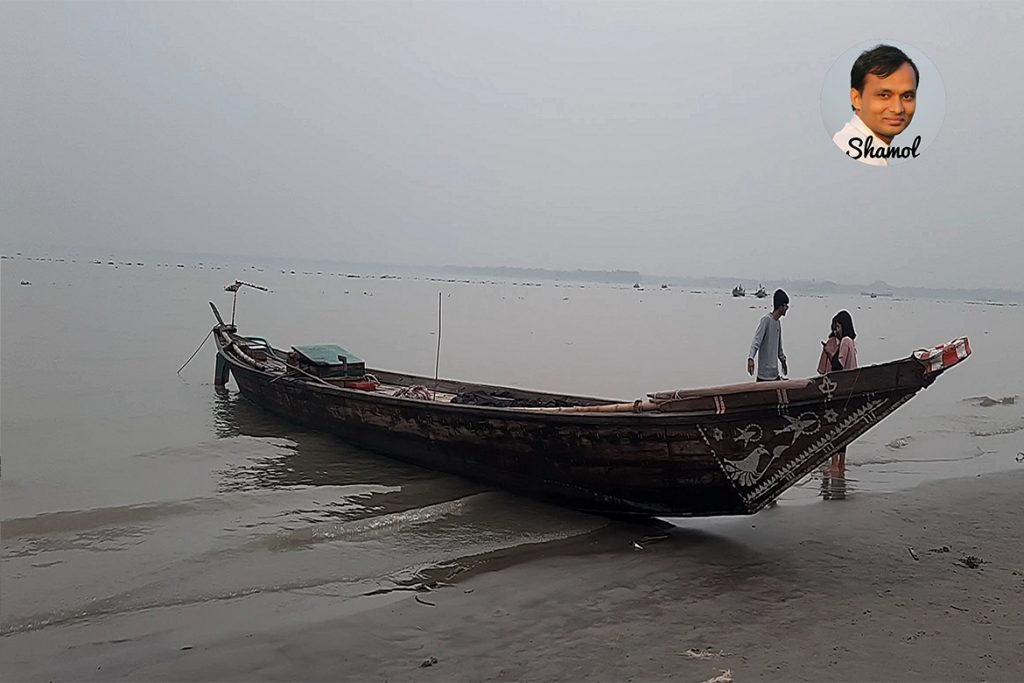
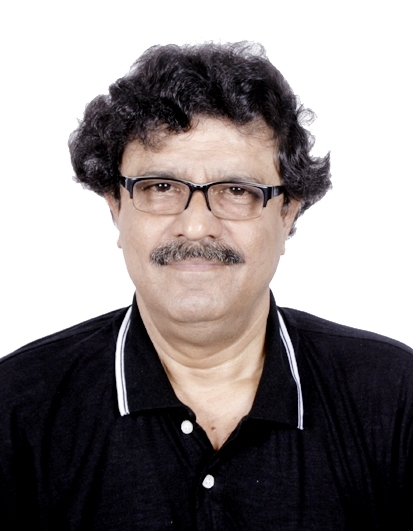

Marvelous Review.
Thanks a lot.